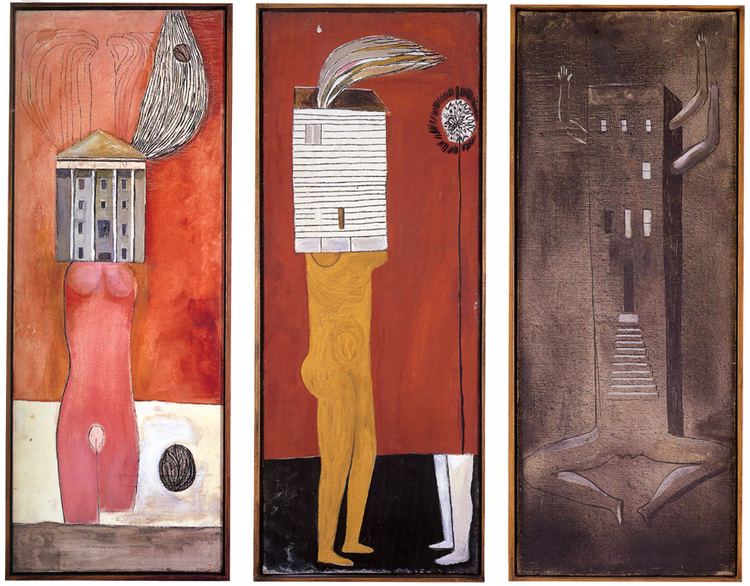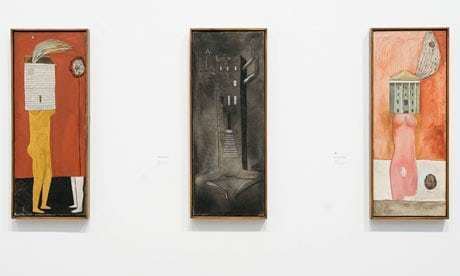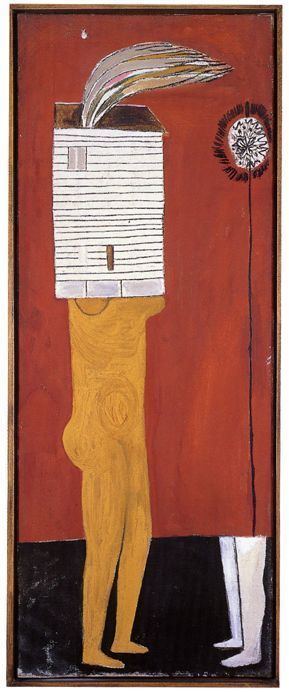 | ||
Similar Spider, Janus Fleuri, Maman, Cumul I, Sleeping Figure | ||
Freunde von freunden femme maison
The Femme Maison (1946–47) series of paintings by French American artist Louise Bourgeois address the question of female identity. In these paintings, the heads and bodies of nude female figures have been replaced by architectural forms such as buildings and houses. Femme Maison translates from the French as ‘housewife’: literally, ‘woman house’. Throughout Femme Maison, Bourgeois shows the home as an essentially female place, in which she can explore ideas about female identity. Bourgeois said the Femme Maison "does not know that she is half naked, and she does not know that she is trying to hide. That is to say, she is totally self-defeating because she shows herself at the very moment that she thinks she is hiding."
Contents

Femme maison
Interpretations

These paintings are frequently read by women as a representation of the abolition of identify for women in home and family, alluding to the "problem with no name" that Betty Friedan identified in the 60s as the dissatisfaction and the lack of fulfilment of women who embarked on careers as housewives and mothers in suburban America.

Another interpretation notes that for Bourgeois, architecture symbolizes the social world that attempts to define the individual, in contrast to the inner world of emotion. The tension between figure and architecture mirrors the dichotomy between mind and body.
Use in media

The most familiar painting from this series was used for the cover of critic Lucy Lippard's collection of essays From The Center.
Sculptures

The ideas involved in the Femme Maison paintings were also translated into sculptural forms, in a range of abstraction and figuration using steel and fabric as well as marble, up through 2001. The sculpture titled Femme Maison (2001) is encased in a metal framed glass box called a "cell." In one sense, the cell encases and protects the artwork; however, Louise Bourgeois’ intention was to use the cell also as a way of containing the memory held within the work.

